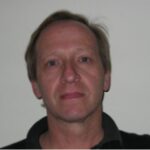Link to Pubmed [PMID] – 3927291
Proc. Natl. Acad. Sci. U.S.A. 1985 Jul;82(14):4788-92
Eight monoclonal antibodies were selected from BALB/c mice immunized with two different monoclonal anti-idiotypic antibodies recognizing two discrete idiotopes characteristic of the anti-poly(Glu60Ala30Tyr10) (GAT) antibody response. These monoclonal antibodies were previously classified as Ab1 (anti-GAT-like) and Ab3 (anti-anti-idiotype) on the basis of expression of the public idiotypic specificity (p.GAT) studied with a xenogeneic serum, anti-GAT activity, and expression of various public idiotopes. All the heavy chain variable region (VH) sequences from Ab1 are nearly identical to the VH sequences of Ab1 anti-GAT monoclonal antibodies. The same type of results has been found with the Ab1 kappa light chain variable region (V kappa) sequences. Confirming our classification, Ab3 VH and V kappa sequences were found to be completely different from Ab1 VH and V kappa sequences. The Ab1 diversity (D) regions are different from one another and different from the D regions found on monoclonal anti-GAT antibodies but function similarly. These D regions are not simply derived from already described D genes. Finally, our results suggest that in the anti-GAT response VH and V kappa sequence are mainly responsible for idiotype expression.

